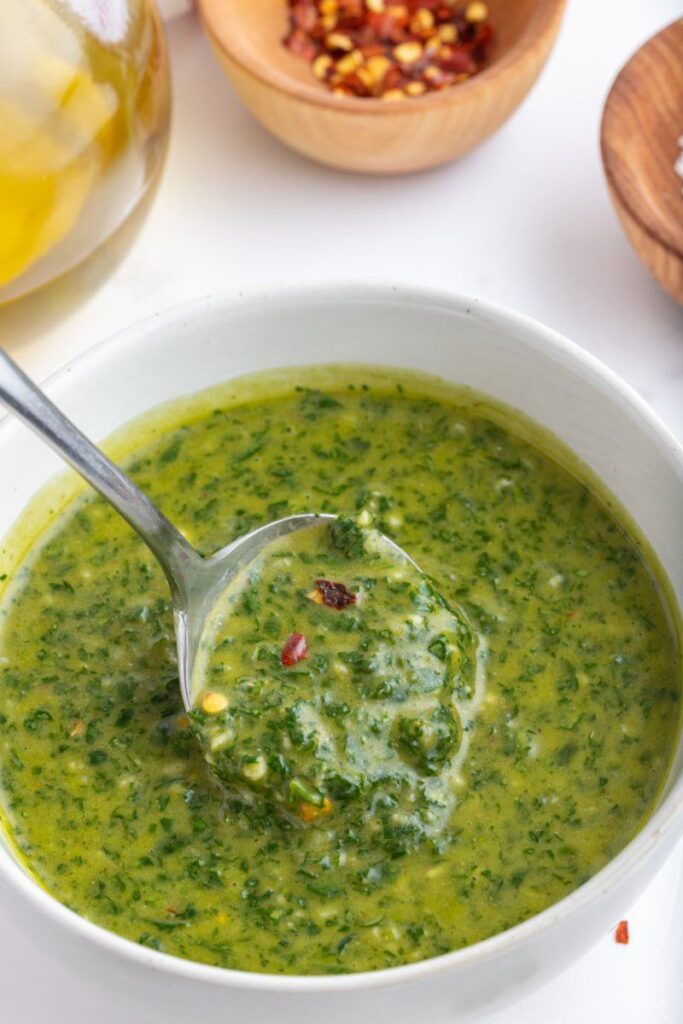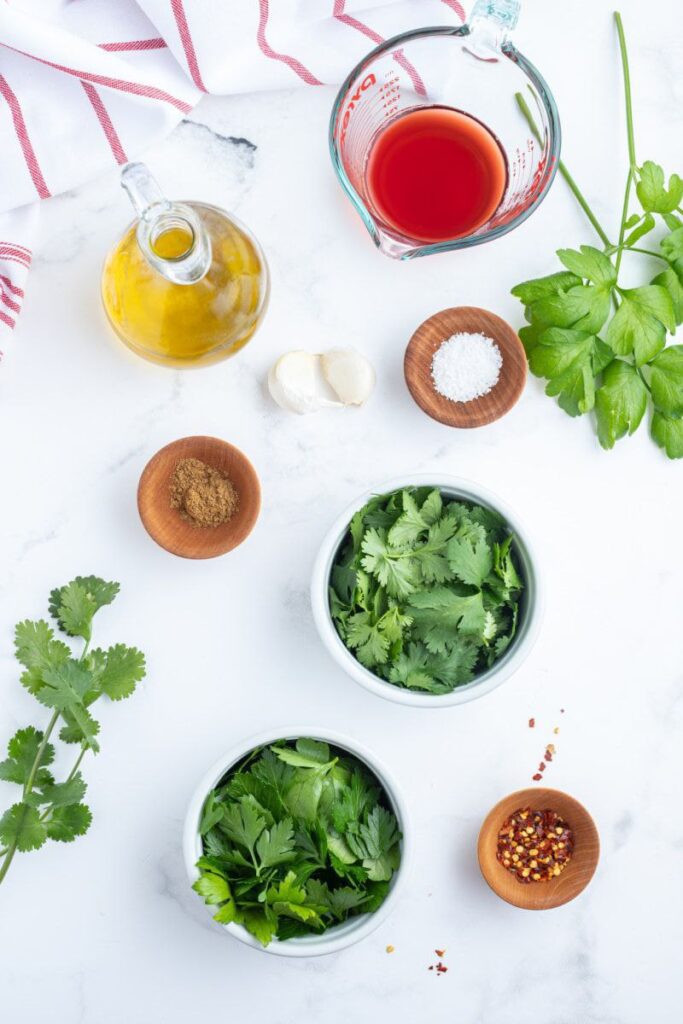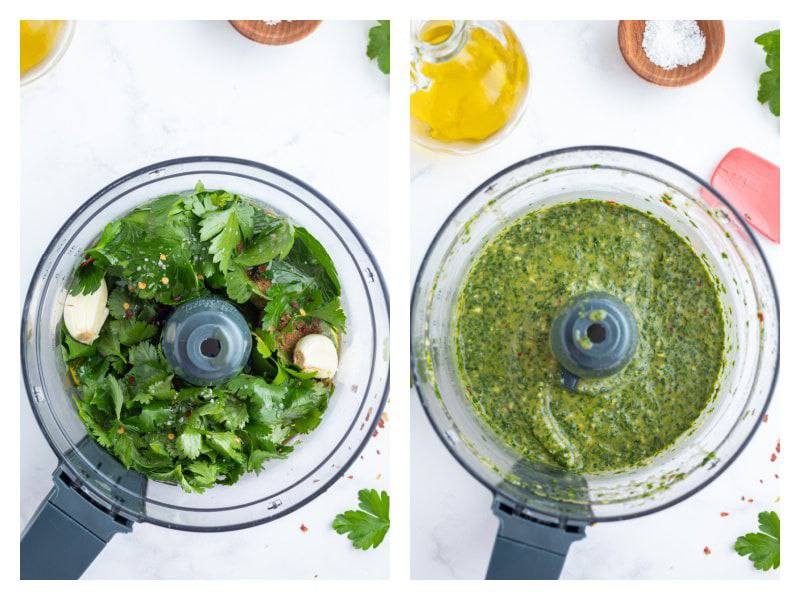You’re thrilled to whip up a homemade pizza, but there’s a nagging feeling that something’s just not right—the sauce. You’ve tried the usual tomato-based sauces, maybe even experimented with a few others, but they just don’t pack the punch you’re looking for. You want something that will elevate your pizza game, a sauce that’s not only flavorful but also adds a unique twist. Regular sauces have become too predictable, and you’re searching for that one ingredient that will surprise and delight your taste buds.
This is where chimichurri comes in. While traditionally associated with grilled meats, this vibrant, herb-based sauce can be a game-changer when applied to pizza. However, the challenge lies in balancing the intense flavors of chimichurri with the classic elements of pizza. The right recipe is key, and not just any recipe will do.
You might be thinking, “Chimichurri on pizza? That’s too far out there.” Or perhaps you’ve attempted to create something similar but ended up with a sauce that overpowered the pizza or didn’t mesh well with the toppings. The last thing you want is to go through the effort of making homemade pizza only to have the sauce ruin it.
Furthermore, there’s a lack of reliable recipes out there that specifically guide you through making a chimichurri sauce that’s pizza-friendly. Most recipes you’ll find are either too traditional, sticking strictly to meat pairings, or too experimental, leaving you with a sauce that’s more confusing than delicious. The frustration builds as you realize that without a tried-and-true recipe, your vision of the perfect pizza might never come to life.

The Sweet Tomatoes Chimichurri Pizza Sauce Recipe
Let’s address this problem head-on with a recipe that combines the boldness of chimichurri with the versatility needed for pizza. This sweet tomatoes chimichurri pizza sauce is crafted to complement the ingredients of your pizza without overshadowing them. It’s the perfect blend of tangy, herbaceous, and sweet flavors that will take your pizza to the next level.
Why Chimichurri?
Chimichurri is an uncooked sauce originating from Argentina and Uruguay, traditionally made with parsley, garlic, vinegar, oil, and a variety of spices. It’s commonly used as a condiment for grilled meats, but its fresh and vibrant flavors can do wonders for other dishes as well.
Why Use Chimichurri on Pizza?
- Herbaceous Flavor: The fresh herbs in chimichurri add a burst of flavor that can complement the richness of pizza toppings like cheese and meats.
- Tangy and Zesty: The vinegar in chimichurri provides a tangy base that cuts through the heaviness of traditional pizza ingredients, offering a refreshing contrast.
- Versatility: Chimichurri can be adjusted in countless ways to match the flavor profile you’re aiming for, making it a versatile base for pizza sauce.

The Sweet Tomatoes Twist
Now, let’s dive into how we transform traditional chimichurri into a pizza-friendly sauce. The key to this recipe is the addition of sweet tomatoes, which balances the acidity and adds depth to the sauce.
Ingredients You’ll Need:
- Fresh Parsley: 1 cup, finely chopped
- Fresh Cilantro: ½ cup, finely chopped (optional but recommended for a more complex flavor)
- Garlic: 4 cloves, minced
- Red Wine Vinegar: ¼ cup
- Olive Oil: ½ cup
- Sweet Tomatoes: 2 cups, finely chopped or blended
- Red Pepper Flakes: 1 teaspoon (but if you like a little extra kick, don’t be afraid to add more!
- Salt: 1 teaspoon (or to taste)
- Oregano: 1 teaspoon, dried
- Black Pepper: ½ teaspoon, freshly ground
- Honey: 1 tablespoon (optional, for additional sweetness)
Step-by-Step Process:
- Prepare the Chimichurri Base: In a medium bowl, combine the chopped parsley, cilantro, and garlic. These form the herbaceous backbone of your sauce.
- Add the Sweet Tomatoes: Blend or finely chop the sweet tomatoes. If you prefer a smoother sauce, blending is the way to go. Add the tomatoes to the herb mixture, stirring well to combine.
- Incorporate the Vinegar and Oil: Slowly whisk in the red wine vinegar and olive oil. The vinegar adds acidity while the oil smooths out the sauce, creating a cohesive blend.
- Seasoning: Add the red pepper flakes, salt, oregano, and black pepper. Stir until everything is well mixed. Taste and adjust seasoning as needed. If the sauce is too tangy, you can add a tablespoon of honey to balance it out.
- Let it Rest: Let the sauce sit for at least 30 minutes before using it on your pizza. This gives the flavors time to come together and get to know each other.

Testing the Recipe
To ensure this recipe works, I tested it on a classic Margherita pizza, a meat lover’s pizza, and a vegetarian pizza. Here’s what I found:
Margherita Pizza:
- Results: The fresh, herbaceous notes of the chimichurri sauce paired beautifully with the simplicity of the Margherita. The sweet tomatoes added a subtle sweetness that balanced the tangy vinegar.
- Feedback: The sauce didn’t overpower the pizza; instead, it enhanced the flavors of the fresh mozzarella and basil. The crust absorbed just enough sauce to add flavor without becoming soggy.
Meat Lover’s Pizza:
- Results: The chimichurri sauce added a zesty kick that contrasted nicely with the rich, savory flavors of the meats. The red pepper flakes added the perfect touch of heat, just enough to give a gentle kick without overwhelming the flavors.
- Feedback: This sauce worked surprisingly well with the heavy, meat-based toppings. It cut through the richness, making the pizza feel less greasy and more balanced.
Vegetarian Pizza:
- Results: The chimichurri sauce was a hit on the vegetarian pizza, adding layers of flavor to the mix of vegetables. The herbs and sweet tomatoes complemented the roasted veggies perfectly.
- Feedback: The sauce made the vegetarian pizza more exciting, adding a fresh, vibrant taste that highlighted the natural sweetness of the vegetables.
Why This Recipe Works
The success of this sweet tomatoes chimichurri pizza sauce lies in its balance. Traditional chimichurri can be intense, with sharp flavors that may not always suit pizza. However, by incorporating sweet tomatoes, the sauce gains a mellow sweetness that complements the tanginess of the vinegar and the freshness of the herbs. The addition of honey is optional but can further smooth out any sharp edges, making the sauce versatile enough for different types of pizza.
Moreover, this sauce isn’t just about flavor; it’s about enhancing the overall pizza experience. The combination of fresh herbs, acidity, and sweetness helps to elevate both the toppings and the crust, ensuring that every bite is as satisfying as the last.
Variations and Tips
While the recipe provided is a great starting point, here are some variations and tips to customize it further:
Variations:
- Spicier Chimichurri: Increase the amount of red pepper flakes or add a diced jalapeño for extra heat.
- Citrus Twist: Replace half of the vinegar with fresh lemon or lime juice for a citrusy kick.
- Creamy Chimichurri: For a creamier sauce, blend in a ripe avocado. This adds richness and a smooth texture, perfect for a more indulgent pizza.
Tips:
- Adjust Consistency: If you prefer a thicker sauce, reduce the amount of olive oil or blend the tomatoes until very smooth. If you prefer a lighter, more delicate sauce, just drizzle in a bit more olive oil.
- Make Ahead: You can prepare this sauce in advance and keep it in the fridge for up to a week. As it sits, the flavors will become richer, making it even more irresistible.
- Use as a Dip: This chimichurri sauce isn’t just for pizza; it also works well as a dipping sauce for breadsticks or a topping for grilled vegetables.

Elevate Your Pizza Game
By now, you’ve got the tools to take your homemade pizza to new heights with this sweet tomatoes chimichurri pizza sauce. Whether you’re making a classic Margherita, a hearty meat lover’s pie, or a veggie-packed pizza, this sauce is versatile enough to enhance any topping combination.
Gone are the days of bland, predictable pizza sauces. With this chimichurri recipe, you can impress your family and friends with a pizza that’s bursting with fresh, vibrant flavors. So, roll out that dough, spread on the sauce, and get ready to enjoy a slice of pizza like never before.
This sauce isn’t just an addition to your pizza—it’s a revolution in your kitchen. Give it a try, and you might never go back to the standard tomato sauce again.




